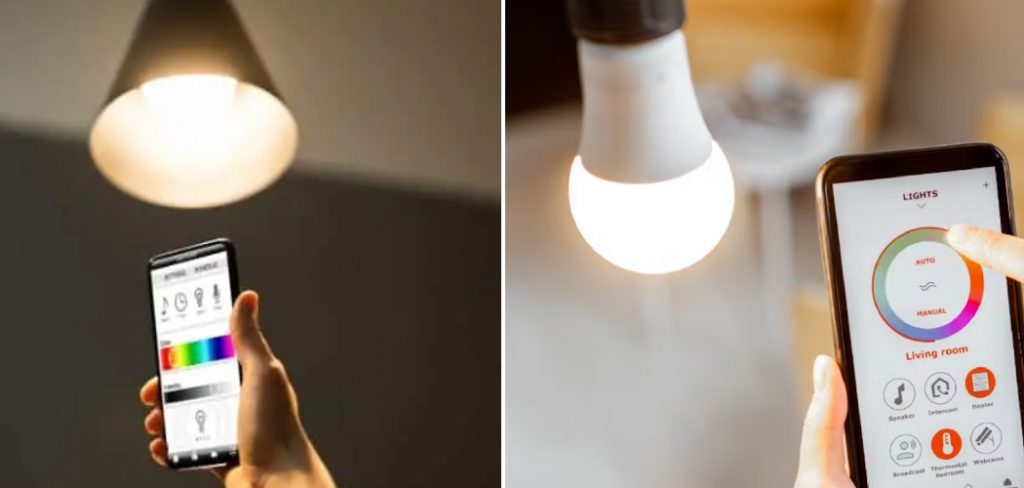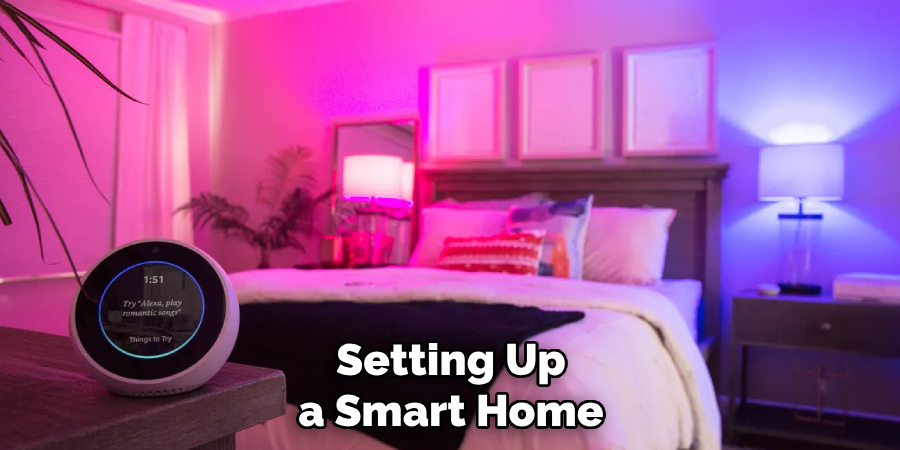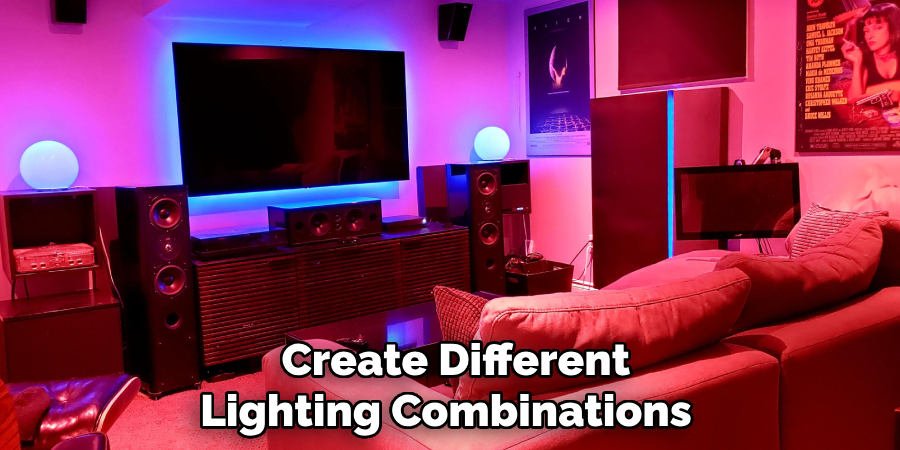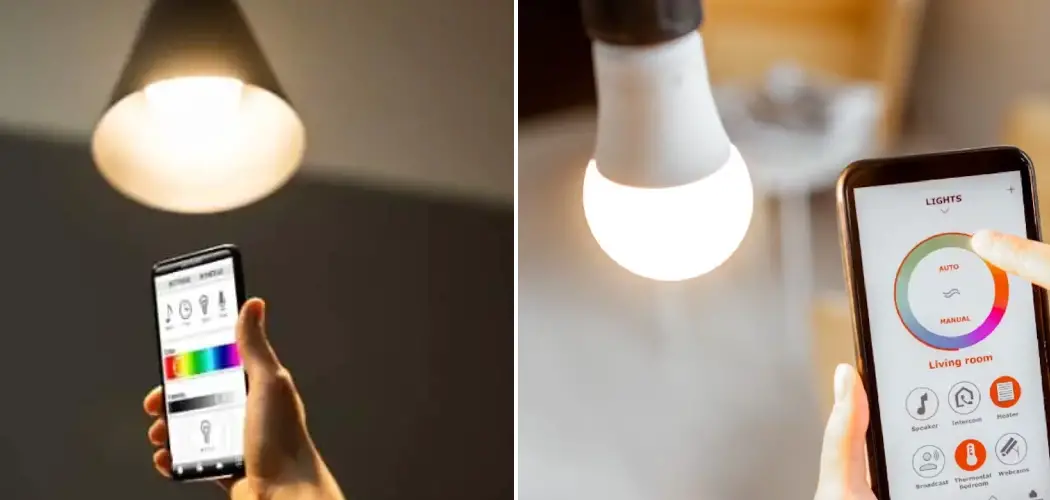There are many reasons why you may want to connect multiple smart bulbs in your home. Whether you’re looking to enhance the ambiance of a room or increase the convenience and efficiency of your lighting, connecting multiple smart bulbs can provide numerous benefits. In this guide, we’ll discuss to connect multiple smart bulbs and explore some of the reasons why you may want to do so.

Connecting multiple smart bulbs is a popular trend nowadays, and for good reason. Having the ability to control all your lights with just a few taps on your smartphone is not only convenient but also has many other advantages. In this article, we will discuss the various benefits of knowing how to connect multiple smart bulbs.
Step-by-step Instructions for How to Connect Multiple Smart Bulbs
Step 1: Inspect Smart Bulbs
The first step to connecting multiple smart bulbs is to inspect the bulbs themselves. Make sure all of the bulbs are in working condition, and check if they require any specific hubs or bridges for connection.
Depending on the type of smart bulbs you have, you may need a hub or bridge for them to connect to each other. If you already have a smart home hub, check if your bulbs are compatible with it. Otherwise, you may need to purchase a separate bridge for the bulbs to connect.
Step 2: Download and Install Apps
Most smart bulbs have their own apps that allow you to control them from your phone or tablet. Make sure to download and install the appropriate apps for your smart bulbs. You may need to create an account with the app to connect multiple bulbs.
Once you have downloaded and installed the apps, it’s time to connect the bulbs to the hub or bridge. Follow the instructions provided by the app or manufacturer on how to do this. It usually involves turning on the bulbs and pressing a button on the hub or bridge to initiate the connection.

Step 3: Group Bulbs
Once all of your bulbs are connected to the hub or bridge, you can group them together for easier control. This will allow you to turn on/off multiple bulbs at once or change their colors simultaneously.
Many smart bulb apps allow you to set up schedules and automations for your bulbs. This means you can program them to turn on or off at specific times or based on certain triggers, such as motion sensors. Take some time to explore the options and set up any desired schedules or automations.
Step 4: Connect to Voice Assistants
If you have a voice assistant such as Amazon Alexa or Google Assistant, you can connect your smart bulbs to them for hands-free control. Simply enable the skill or action for your specific smart bulb brand and follow the instructions provided.
Before fully utilizing your smart bulbs, it’s important to test the connectivity and make sure all of the bulbs are responding properly. If there are any issues, troubleshoot by following the instructions provided by the manufacturer or app.
Step 5: Customize Settings
Most smart bulb apps allow you to customize settings such as brightness levels and color options. Take some time to adjust these settings to your liking.
Now enjoy the convenience and control of your new smart home lighting system. Remember to regularly update the apps and firmware for optimal performance.
Safety Precautions for How to Connect Multiple Smart Bulbs
- Read and follow all instructions provided by the manufacturer or app carefully.
- Make sure to turn off the power supply before attempting to connect the bulbs.
- Use only recommended hubs, bridges, or accessories for your specific smart bulb brand.
- Keep children away from the installation process and always supervise them around smart bulbs.
- Do not overload your smart hub or bridge by connecting too many bulbs. Refer to the manufacturer’s guidelines for maximum supported devices.
- Regularly check for updates and software patches to ensure optimal security and functionality of your smart bulbs.
- Do not expose the smart bulbs to water or extreme temperatures.
- If you experience any technical difficulties, contact the manufacturer or seek professional assistance.

By following these safety precautions, you can ensure a smooth and safe experience while connecting multiple smart bulbs. So go ahead, get creative with your home lighting and enjoy the convenience of controlling multiple bulbs at once. Remember to always stay informed and keep your smart home devices up to date for a seamless experience.
What is the Benefit of Connecting Multiple Smart Bulbs?
Connecting multiple smart bulbs in your home can have several benefits that go beyond just controlling them with your smartphone. By connecting multiple smart bulbs, you can create a more versatile and efficient lighting system, enhance the ambiance of your home, and even save on energy costs.
One of the main benefits of connecting multiple smart bulbs is the ability to control them together as a group. This means that instead of turning on and off each bulb individually, you can control multiple bulbs with a single command.
For example, if you have smart bulbs in your living room, you can turn them all on or off at the same time without having to move from one corner to another. Another benefit is the ability to create scenes or routines using multiple smart bulbs.
Scenes allow you to customize the lighting in your home for different occasions or moods. For example, you can create a “movie night” scene that dims the lights and turns off all unnecessary bulbs, or a “party” scene that turns on colorful lights in sync with music.
Are There Any Compatibility Issues When Connecting Different Brands of Smart Bulbs Together?
When it comes to setting up a smart home, connecting multiple smart bulbs is often a top priority. This allows for more advanced control and customization options, as well as the ability to create scenes and schedules. However, one question that may arise is whether there are any compatibility issues when connecting different brands of smart bulbs together.

The short answer is yes, there can be compatibility issues when connecting different brands of smart bulbs together. This is because each brand may use different communication protocols, such as Zigbee, Z-Wave, or Wi-Fi.
These protocols are what allow the bulbs to connect and communicate with each other and with your chosen smart home hub or app. In most cases, manufacturers will clearly state which protocol their smart bulbs use on their packaging or website. If you are unsure, it is always best to do some research beforehand to ensure compatibility.
Are There Any Energy-saving Benefits When Connecting Multiple Smart Bulbs Together?
The answer is yes – there are some energy-saving benefits to connecting multiple smart bulbs together. Here’s how:
1. Simplify Controls
When you connect multiple smart bulbs together, you can control them all at once with just one command. This means that when you leave a room, you don’t have to remember to turn off each individual bulb – simply give one voice or app command and all the lights will turn off.
2. Create Schedules
By connecting multiple smart bulbs together, you can easily create schedules for all of them to follow. This means that you can have all the lights in your home turn on and off at specific times, making it seem like someone is always home. Not only does this provide added security but it also saves energy by ensuring that lights are not left on when they are not needed.
3. Trigger Automation
Another benefit of connecting multiple smart bulbs together is the ability to trigger automation. This means that one action, such as turning on a specific lighting scene, can also trigger other actions like adjusting the thermostat or turning off all electronics in the room. This not only saves energy but also adds convenience to your daily routine.
4. Customize Scenes
Connecting multiple smart bulbs together also allows you to customize lighting scenes. This means that you can create different lighting combinations for different moods or activities, such as a cozy reading scene or a bright and energizing workout scene. By having all the bulbs connected, you can easily switch between scenes with just one command.

5. Monitor Energy Usage
Some smart bulb systems also offer the ability to monitor energy usage. By connecting multiple smart bulbs together, you can get a better understanding of your overall energy consumption and adjust accordingly to save even more electricity.
Overall, connecting multiple smart bulbs together not only adds convenience but also offers some energy-saving benefits.
Conclusion
In conclusion, smart bulbs are an excellent way to add convenience and functionality to your home lighting. With the ability to control multiple bulbs at once, you can easily create custom lighting scenes for different moods or activities. Plus, with the added benefit of energy efficiency and cost savings, it’s no wonder that smart bulbs are becoming increasingly popular among homeowners.
When it comes to connecting multiple smart bulbs, it’s a fairly simple process that can be done in just a few easy steps. First, make sure you have a compatible smart home hub or app to control your bulbs. Then, follow the instructions provided by the manufacturer to add each bulb to your network.
Once all your bulbs are connected, you can group them together and control them simultaneously for maximum convenience. I hope this article has been beneficial for learning how to connect multiple smart bulbs. Make Sure the precautionary measures are followed chronologically.

